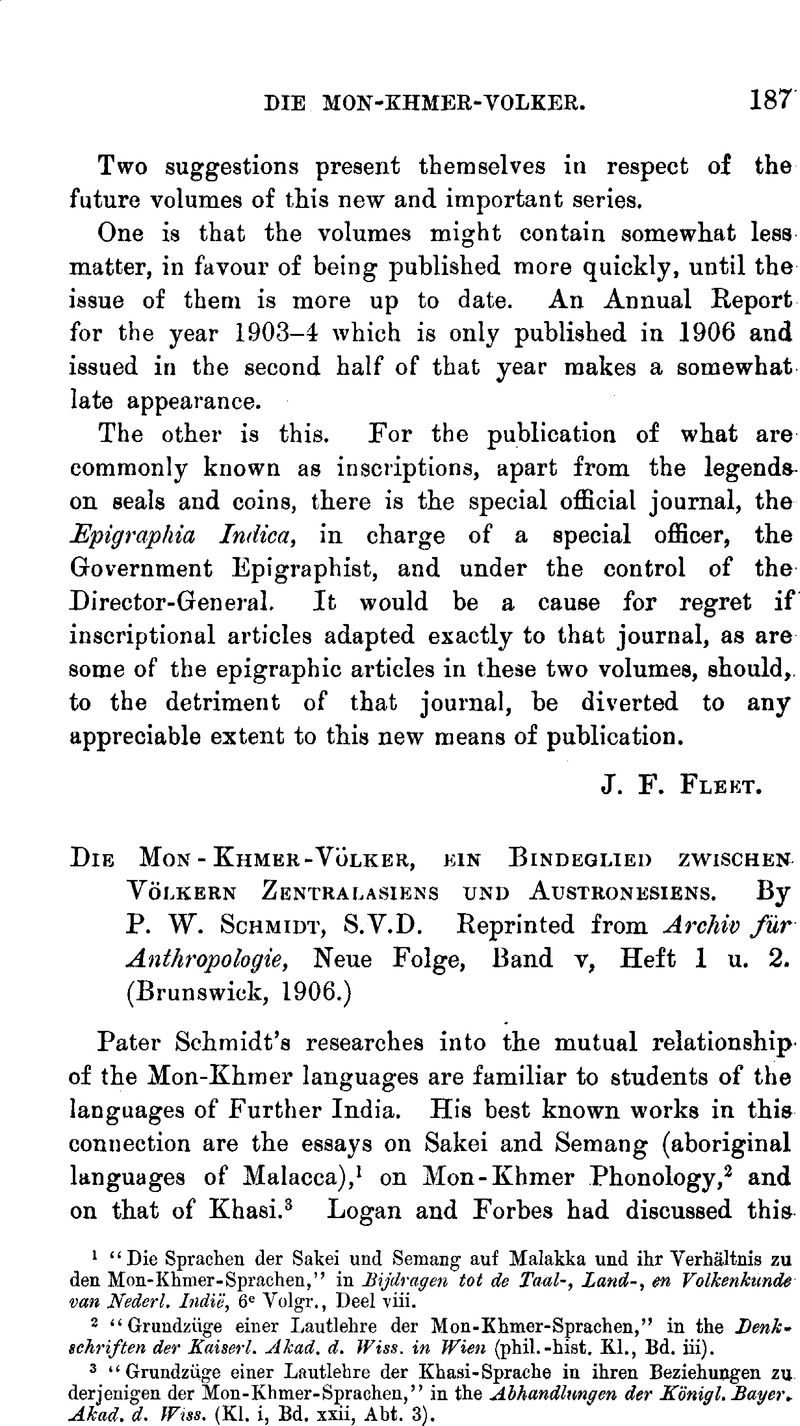No CrossRef data available.
Published online by Cambridge University Press: 15 March 2011

page 187 note 1 “Die Sprachen der Sakei und Semang auf Malakka und ihr Verhältnis zu den Mon-Khmer-Sprachen,” in Bijdragen tot de Taal-, Land-, en Volkenkunde van Nederl. Indië, 6e Volgr., Deel viii.
page 187 note 2 “Grundzüge einer Lautlehre der Mon-Khmer-Sprachen,” in the Denkschriften der Kaiserl. Akad. d. Wiss. in Wien (phil. -hist. Kl., Bd. iii).
page 187 note 3 “Grundzüge einer Lautlehre der Khasi-Sprache in ihren Beziehungen zu derjenigen der Mon-Khmer-Sprachen,” in the Abhandlungen der Königl. Bayer, Akad. d. Wiss. (Kl. i, Bd. xxii, Abt. 3).
page 189 note 1 Most of these languages carry out their word-building by prefixes and infixes, but Muṇḍā and, to a certain extent, Nicobar also employ suffixes. In discussing the reason for this difference Pater Schmidt incidentally quotes a grammatical law of some importance, which he had laid down on a previous occasion, but which is most probably new to most readers of this. It is that, in languages which employ suffixes, the genitive (without any affix) precedes the governing noun, while in those that employ prefixes it follows it.
page 190 note 1 See Mitt. d. Wiener Anthropologischen Gesellschaft, Bd. xxix (xix), 1899, p. 245. The Papuan of New Guinea, the Australian, and a few other neighbouring languages are not Austronesian.
page 191 note 1 Or, in the reprint, eighty-six pages of small octavo.